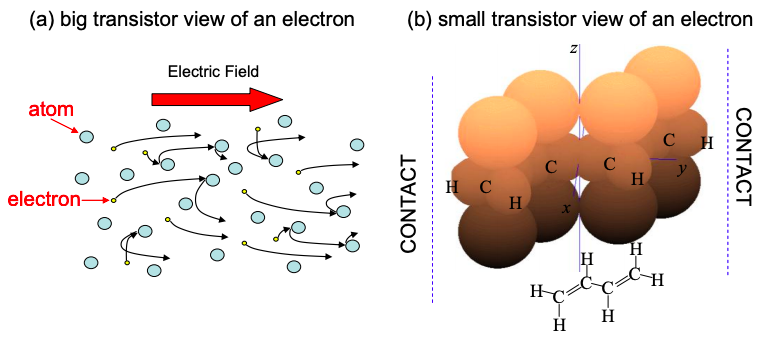1.1: The Quantum Particle
- Page ID
- 49298
This class is concerned with the propagation of electrons in conductors.
Here in Part 1, we will begin by introducing the tools from quantum mechanics that we will need to describe electrons. We will introduce probabilistic descriptions of the key physical properties: position, momentum, time and energy. In the next part we will consider electrons in the simplest possible model of a conductor – a box – i.e. we will ignore atoms and assume that the material is perfectly homogeneous. This model of electrons in conductors is known as "the particle in a box‟. It is surprisingly useful, and later in the class we will employ it to describe the behavior of modern transistors.

But first we will need a way to describe electrons. It is often convenient to imagine electrons as little projectiles pushed around by an electric field. And in many cases, this classical model yields a fairly accurate description of electronic devices. But not always. In nanoscale devices especially, electrons are better described as waves.



